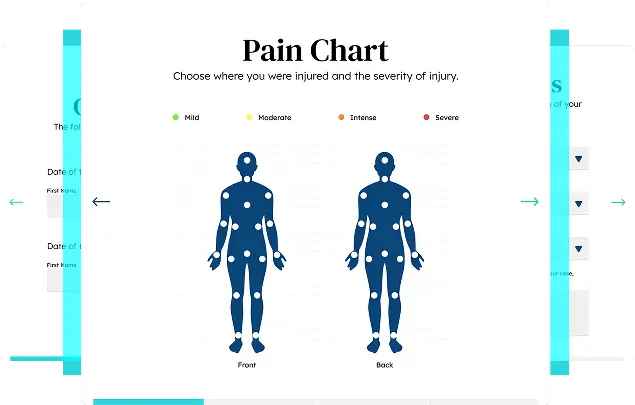Massachusetts Foot and Ankle Injury Lawyer
Suffering a foot or ankle injury can be life-altering, affecting your ability to work and enjoy daily activities. At DiBella Law Offices, our Massachusetts Foot and Ankle Injury Lawyers are here to help you pursue the compensation you deserve for your pain, medical bills, and lost wages.
Get Free Advice About The Compensation You Deserve
Home » Massachusetts Personal Injury Lawyer » Massachusetts Workers’ Compensation Attorney » Massachusetts Foot and Ankle Injury Lawyer
Reviewed by: Christopher DiBella
April 9, 2025
Representing Workers’ Compensation Claims in Massachusetts
If you hurt your foot or ankle while at work or in another setting due to someone else’s negligence, it is crucial that you notify your employer immediately and seek medical attention. A foot or ankle injury can easily cause you to become incapacitated, which can adversely affect your ability to work and can quickly compromise your financial stability.
Injuries that inhibit the ability to stand for extended periods of time, limit your full range of movement, or even prevent you from being able to comfortably walk short distances are serious and can lead to permanent disability if not treated correctly from the beginning.
Supporting Clients Suffering from Work Injuries
At DiBella Law Injury and Accident Lawyers, we have carefully developed our reputation for thoroughness when it comes to helping each and every client who retains our services. Our Massachusetts workers’ compensation lawyers understand what is at stake. Among the communities we serve are Burlington, Lowell, Haverhill, Boston, and Woburn in Massachusetts, and Plaistow, Concord, and Salem in New Hampshire.
If you would like a free initial consultation to discuss your legal questions and goals, we have offices located in Boston, Burlington, and Methuen for your convenience.
Our firm can help you make sure that your diagnosis and treatment plan are well documented for any personal injury and workers’ compensation claim we pursue on your behalf. We aim to help you recover maximum compensation for any injuries you may have sustained in the workplace.
The types of foot and ankle injury cases we represent include:
- Broken ankles and other foot bones
- Hairline and other types of fractures
- Ligament and tendon injuries
- Muscle tears
We’ve offered crucial support and guidance to individuals who have suffered injuries, ensuring their financial and emotional well-being.
Types of Foot and Ankle Injuries
Feet and ankles have many different bones, joints, muscles, tendons, and ligaments. Because of this, even breaking a small bone or twisting your ankle the wrong way can lead to months of treatment and recovery. Below are some common foot and ankle injuries:
- Ankle sprains. Ankle sprains are extremely common, affecting 1 in 10,000 people every day. When an ankle sprain occurs, the treating doctor will categorize it as either a stretch, partial tear, complete tear, or high ankle injury. All of these terms refer to one or more ligaments on the outside of the ankle being stretched or torn, which is the true definition of an ankle sprain.
- Stress fractures. This type of injury occurs when one or more of the small bones at the top of the foot is broken. Stress fractures are commonly due to overuse, particularly when the bones have felt a repetitive force over a long period of time.
- Traumatic fractures. These injuries are more serious than stress fractures and can occur anywhere in the foot. They occur suddenly, often as a result of falling, when something heavy is dropped on a worker’s foot, or when a foot is run over by equipment or vehicles.
- Tendonitis. Tendons are cord-like bands that connect muscles to the bones. When these become strained or overworked, they can become inflamed, which is typically the first sign there is a problem. Tendonitis is often mistaken for a sprained ankle, and typically occurs when a person has pushed himself beyond his capabilities. Something like working a double shift or working too long without resting can cause tendonitis.
- Crush injuries. These injuries can affect any of the soft tissue, muscle, and bones in the feet or ankles, and they are difficult to treat. Crush injuries tend to affect material handlers, forklift operators, and other on-the-job vehicle operators.
- Calcaneus fractures. The calcaneus is the bone that forms the heel of the foot. Calcaneus fractures are most often caused by a fall from a height, such as a ladder or scaffolding. These fractures can also result in secondary spinal injuries, as the impact wave travels up the body from the foot.
Feet and ankle injuries may seem minor, but sometimes it can take anywhere from six to nine months to recover from one, and if the injury is left untreated or undiagnosed, recovery could take longer. When surgery is needed to implant screws, healing can take even longer and another surgery may be needed to remove the hardware in four to six months.
During this time, a worker may not be able to work or perform daily activities such as walking, leaving him or her immobile. That places a great financial drain on the injured individual. Workers’ compensation can provide benefits to help those hurt on the job, while a personal injury claim can seek compensation if another individual caused the injury.
Get immediate case evaluation with no cost or obligation to you in less than 5 minutes.

Aggressive & Thorough Representation
Employers and insurers keep track of the lengths law firms go to for their personal injury and workers’ compensation clients. When insurers see that a law firm follows lawsuits through trial they are much more willing to negotiate. By doing our homework and taking a tough stand, our attorneys and staff can do what is possible to obtain a jury award, judgment, or settlement that covers your financial needs and will help you get on with your life.
Please contact our Massachusetts foot injury lawyers today at (781) 386-1232 and let us use our knowledge to do the legal legwork so you can focus on your recovery. Our firm offers Spanish translation services for those clients who need it.
